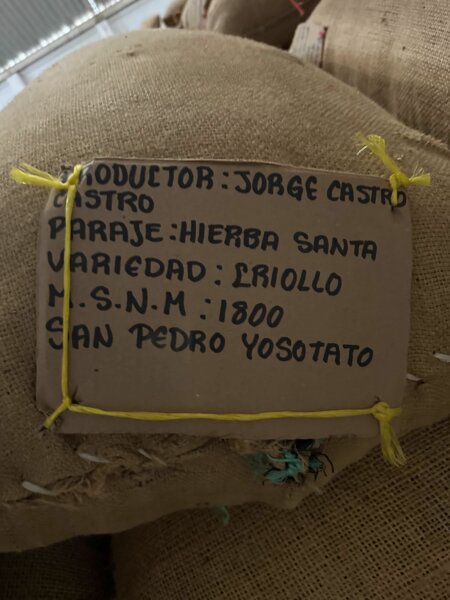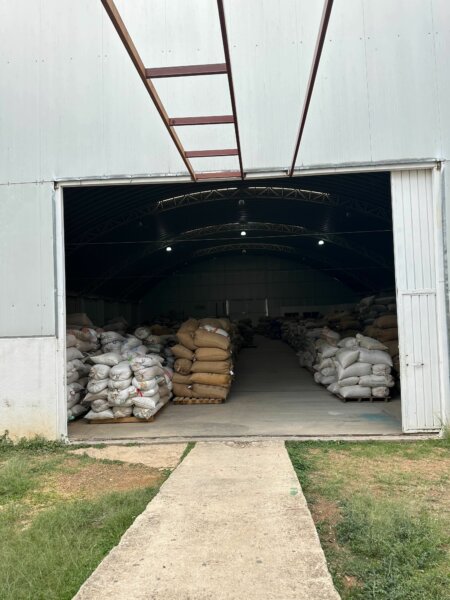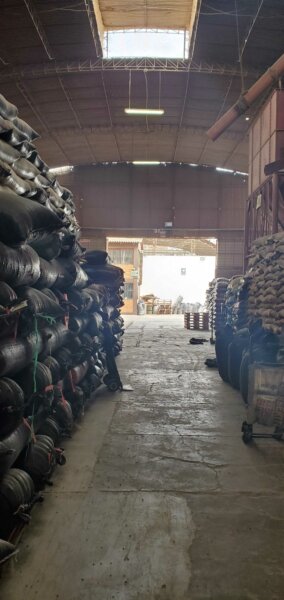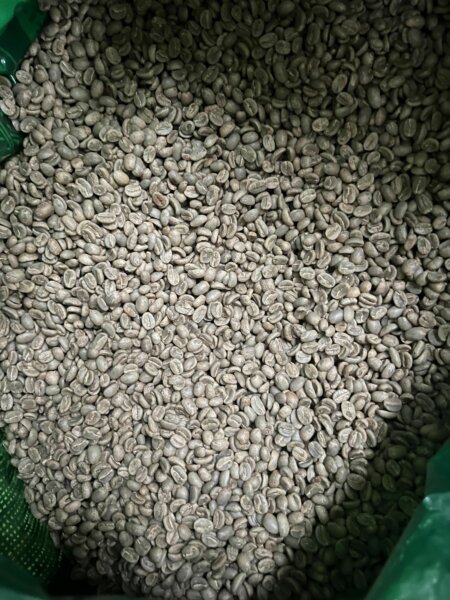Every coffee starts its life as the seed of a fruit, then is processed out of the fruit down to its parchment layer. After that, all coffees go through milling to remove their parchment before they’re packed for export and shipped.
While the specialty coffee industry places a lot of emphasis on the way that wet or dry processing (removing coffee from its fruit layer either by washing or drying) might enhance or detract from flavor, the milling process (removing coffee’s parchment layer) that coffee undergoes afterward is something many take for granted, or may not even be aware of. Milling has a huge influence on coffee’s quality potential. Through hands-on oversight at the mill, particularly in Peru, Mexico, and more recently Bolivia, we ensure traceability, root out defects, make sure the final product is exactly what it’s supposed to be, and minimize the amount of coffee lost in the process.
Goals & Calibration
 Coffee mills are seasonally-operated factories where coffee’s parchment is removed from the bean, leaving clean, ready-to-roast coffee. There are mills that specifically service (or are even owned and operated by) multinational coffee corporations, but most of the mills we work with in Peru and Mexico primarily mill for cooperatives and producer associations. The goal of the group getting their coffee milled matters when it comes to the finished product.
Coffee mills are seasonally-operated factories where coffee’s parchment is removed from the bean, leaving clean, ready-to-roast coffee. There are mills that specifically service (or are even owned and operated by) multinational coffee corporations, but most of the mills we work with in Peru and Mexico primarily mill for cooperatives and producer associations. The goal of the group getting their coffee milled matters when it comes to the finished product.
If the association’s goal is to have the mill process full container loads without lot separations as quickly as possible, that will create one set of quality assurance protocols. In the case of Red Fox, our goal is to mill meticulously to ensure that:
- Lots retain full traceability and lot separations remain intact.
- We thoroughly remove defects while avoiding unnecessary volume loss due to overmilling.
Making that happen requires calibration with those running the mill operations and boots-on-the-ground involvement from our team. We supervise the entire process, from when the coffee arrives to when it’s loaded into the container for export.
We work with smallholder producers who rely primarily on the premiums we pay for their coffee, so we don’t want to reduce the volume for which they get paid any more than we have to. At the other end of the chain, roaster partners are paying for a premium product and it’s paramount that they get what they’ve ordered. Through tight QC at the mill, we’re able to root out defects while retaining as much volume as possible, delivering a product that’s exactly as contracted.
Reducing Defects & Polishing the Final Product
 A great offer sample can become an average coffee if the milling isn’t done carefully. During milling, we get to address any production-side errors in harvesting, processing, and storage, pulling out any underripe, unclean, or otherwise defective beans and creating a polished, ideal final product. There are coffees with great cups that have a lot of defective beans on reaching the mill, so we get to take an active role in maximizing that potential.
A great offer sample can become an average coffee if the milling isn’t done carefully. During milling, we get to address any production-side errors in harvesting, processing, and storage, pulling out any underripe, unclean, or otherwise defective beans and creating a polished, ideal final product. There are coffees with great cups that have a lot of defective beans on reaching the mill, so we get to take an active role in maximizing that potential.
The Process Itself
 At the mill, we pull samples frequently (approximately every 15-20 minutes from 7am to 5pm at the peak of milling season) and green grade them for defects so that we can communicate any adjustments needed in the milling process to the person in charge of the machinery in real-time. Then, we bring the sample back to our lab to roast and cup. If we find an issue with the roasted cup quality, we either reject that lot or separate further, into even smaller chops, to isolate the defect.
At the mill, we pull samples frequently (approximately every 15-20 minutes from 7am to 5pm at the peak of milling season) and green grade them for defects so that we can communicate any adjustments needed in the milling process to the person in charge of the machinery in real-time. Then, we bring the sample back to our lab to roast and cup. If we find an issue with the roasted cup quality, we either reject that lot or separate further, into even smaller chops, to isolate the defect.
When we green grade coffees, we’re using the SCA-standard process to note visible issues like:
- Cuts or chips in the beans from milling equipment, which lead to faster aging of the coffee
- Full blacks, which negatively affect the coffee’s flavor
- Full sours, which negatively affect the coffee’s flavor
- Past-crop coffee, which affects coffee’s flavor
- Insect damage, which in excess can affect coffee’s flavor
- Dramatic bean-size irregularities, which can lead to uneven roasting
- Excessive elephant ears or peaberries, which can similarly lead to uneven roasting
- Foreign objects, which can damage roasting or brewing equipment
After green grading, we roast and cup the coffees, noting issues that aren’t visible at the green level like:
- Phenol
- Ferment
- Excess quakers
- Other unclean flavors
Guaranteeing Traceability
 One of our key focuses at the mill is ensuring traceability.
One of our key focuses at the mill is ensuring traceability.
In order to do that, the milling team pays close attention to each lot from the moment it enters the mill through the moment it leaves. That includes checking that lots belong to the producer they’re supposed to, that codes on offer samples match those on parchment bags, and that nothing else gets into the mix at any point. This is mission critical for us and our roaster partners.
The Challenge of Hands-On Milling
 Being an involved part of the milling process brings with it a slate of challenges, from long, labor-intensive days to precise and constant communication.
Being an involved part of the milling process brings with it a slate of challenges, from long, labor-intensive days to precise and constant communication.
As mentioned above, sampling happens about every 15-20 minutes from 7am to 5pm, for days to weeks in a row. There are tons of moving parts at all times (both literally and figuratively), and maintaining comprehensive awareness for that long is immensely demanding.
Our milling team navigates the center of many parties’ needs: producers who put forth the product and will live on the money that comes from it, Red Fox’s QC standards and reputation, and clients who will ultimately receive the product, roast it, and stand behind it. It’s a lot of responsibility securing a final shipped product that meets the needs of all parties and represents Red Fox’s quality standards.
What happens if we don’t supervise milling? Coffee could enter our position that isn’t what we sourced, defects can persist that would otherwise be filtered out, coffee could be damaged in the milling process itself, and more. No matter how much we trust a partner, our involved supervision guarantees the final product more than anyone else’s word.
Adding Value

When milling is properly supervised, everyone benefits: clients, local partners, producers, and us. Conversely, if milling isn’t well supervised, everyone in that value chain loses something: quality, reputation, financial opportunity, and more.
Supervising milling is demanding work, but we’ve found that it makes a massive difference. Following a careful chain of QC does take extra work, but it’s well worth it in return for a stronger, more secure supply chain where everyone receives greater predictability, repeatability, and ultimately quality.
Interested in sourcing coffee with us? Reach out at info@redfoxcoffeemerchants.com. To learn more about our work, check out our journal and follow us on Instagram @redfoxcoffeemerchants.
